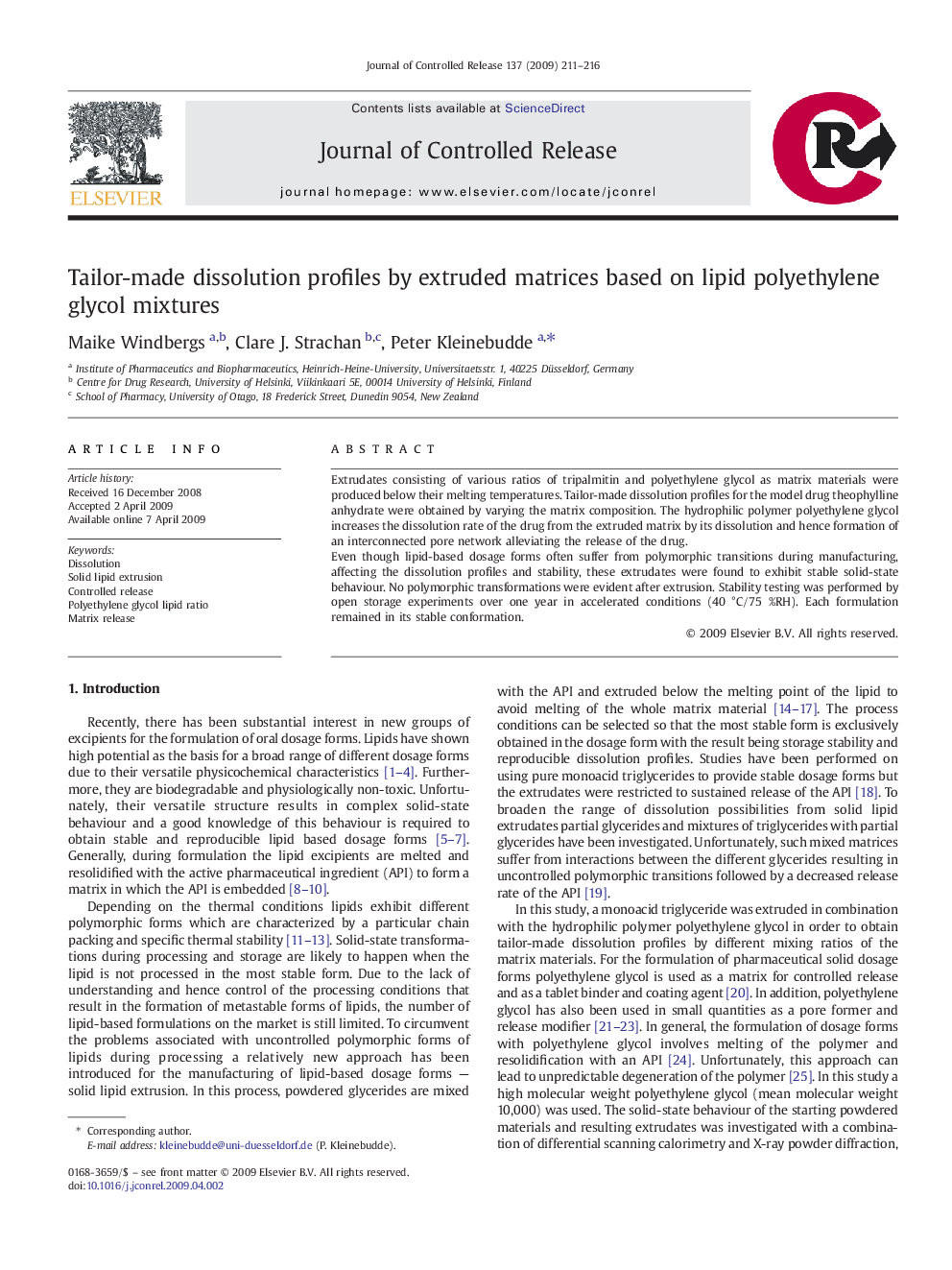| Article ID | Journal | Published Year | Pages | File Type |
|---|---|---|---|---|
| 1426121 | Journal of Controlled Release | 2009 | 6 Pages |
Extrudates consisting of various ratios of tripalmitin and polyethylene glycol as matrix materials were produced below their melting temperatures. Tailor-made dissolution profiles for the model drug theophylline anhydrate were obtained by varying the matrix composition. The hydrophilic polymer polyethylene glycol increases the dissolution rate of the drug from the extruded matrix by its dissolution and hence formation of an interconnected pore network alleviating the release of the drug.Even though lipid-based dosage forms often suffer from polymorphic transitions during manufacturing, affecting the dissolution profiles and stability, these extrudates were found to exhibit stable solid-state behaviour. No polymorphic transformations were evident after extrusion. Stability testing was performed by open storage experiments over one year in accelerated conditions (40 °C/75 %RH). Each formulation remained in its stable conformation.
Graphical abstractTailor-made dissolution profiles for a model drug could be obtained from extruded matrices based on triglyceride polyethylene glycol mixtures produced below the melting point of the components.Figure optionsDownload full-size imageDownload as PowerPoint slide
